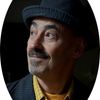
Nicolas Winding Refn's hard-boiled stripped-down crime thriller Drive thrums with such knockout style, I'll wager a platinum set of dual carbs on an Oscar nomination for its cinematographer, Newton Thomas Sigel, at the least.
The film, which opens Friday, has already garnered the Best Director award for Refn at Cannes. I saw a screening earlier this week.
And I haven't been so jazzed by a film's visual world in a long stretch.
Imagine a stark skeletal fable rendered in color-and-shadow-saturated set pieces: a moody L.A.-noir, at once intimate, lean, yet monumental, painted in sugar-candy baroque.
And blood of course. Lots of it -- and shockingly -- when blood-and-bullets time comes. Not to mention hammers, knives, and the odd fork or two.
The story, adapted from James Sallis' short novel: a nameless young movie stunt driver (Ryan Gosling), moonlighting as a getaway driver in L.A., falls for a young mom (Carey Mulligan) with a little boy. Her hubby (Oscar Isaac) turns up from an enforced absence. Gosling goes along to help on a "job."
Whereupon, as the great Ray Winstone would put it, things go all "pear-shaped." And Drive's shadowy guys (Albert Brooks and Ron Perlman) turn very dark indeed.
Gosling's enigmatic Driver smiles more than he speaks, to the point of an eerie "I am-a-machine" autist cool (except when he starts threatening baddies). The verbals are left to the dark side, and Albert Brooks does bravura work as a salt-of-the-earth schmuck who's a convincingly reluctant but truly scary monster.
Refn constructs Drive's rhythm with long stretches of silence, interspersing them with mayhem. You might say this is a movie about people sitting around quietly smiling, and then all hell exploding. I mean exploding. The gunfire even sounds beefed up, like in Bonnie and Clyde. A worthwhile tactic, if so, for its shock value. I thought somewhat of Soderbegh's intimate The Limey (certain scenes) ratcheted up with the silences-then-apocalypses of Takeshi Kitano films.
As for Drive's auto action, there's a big three, besides Mulligan and Gosling's debut holding of hands on a car's gear shift. First up: a tour de force of hide and seek through a haunting vision of L.A., structured around the radio play-by-play of a Clippers game. The second comes in tandem with a robbery, and the tandem is fantastic shocking stuff, a worthy addition to the pantheon of crime-thriller highlights. It's not quite Ronin's chase extravaganza -- has any actor ever registered high-speed driving like De Niro? -- but it has a higher adrenaline frenzy. The movie's Pandora Box gets flung open, and here comes hell on wheels. Gosling gives good value as a wheel man in action. Auto-action number three: Refn's theatricality comes on display, such as he showed in Bronson.
Oh and there's brief urban-bucolic homage to To Live and Die in L.A. and the L.A. river.
Any ambitious crime thriller gives the pleasures of its answers to the genre's formalized moments and challenges. Drive's spin on the "Ferocious Encounter in a Confined Public Space" offers some hyper-violence fuel-injected with love suddenly showing its cards. Compare this to like situations in Kitano's Sonatine (pardon the dub) and Stallone's oddball (gulp, underrated?) Get Carter.
More profound is Drive's non-classical variation on the "Vulnerable Point" element of such films. Usually there's an inevitable shape to the narrative when the most vulnerable/valued people or situation are identified... But as with No Country for Old Men, Drive has its own way with this convention. I'm not sure if it ultimately works, to be honest. I mean that literally: I'm not sure. I'm not quite sure about the soundtrack, either, which is retro Europop stuff and lends, to my hard-boiled ears, a too-Wagnerian grandiosity to the proceedings.
But Drive -- one silence-and-sugar rush, one arresting artful ride. I can't wait to see it again to take in more fully its pleasures. Which, for all their immediacy, involve no handheld cameras!
But watch out for handshakes. And stunning closing shadows.
One final note, wine-related. Author Sallis is a prodigious talent: crime writer, poet, literary translator, biographer, musician. But in Drive the novel, he has a character (not in the movie) who brings to dinner supposedly tasty wines that I have to say, do not cut it. A Chilean Merlot? An Australian Merlot-Shiraz blend? Oy. If you're drinking in that style, I'd suggest an Argentinean Malbec Reserva or a Cab. I'd show up for a dinner for them.
Small disclaimer: Drive exec producer David Lancaster at Bold Films produced a film of mine called The Sadness of Sex. I'm sure he apologizes for that blunder every night in his prayers.
